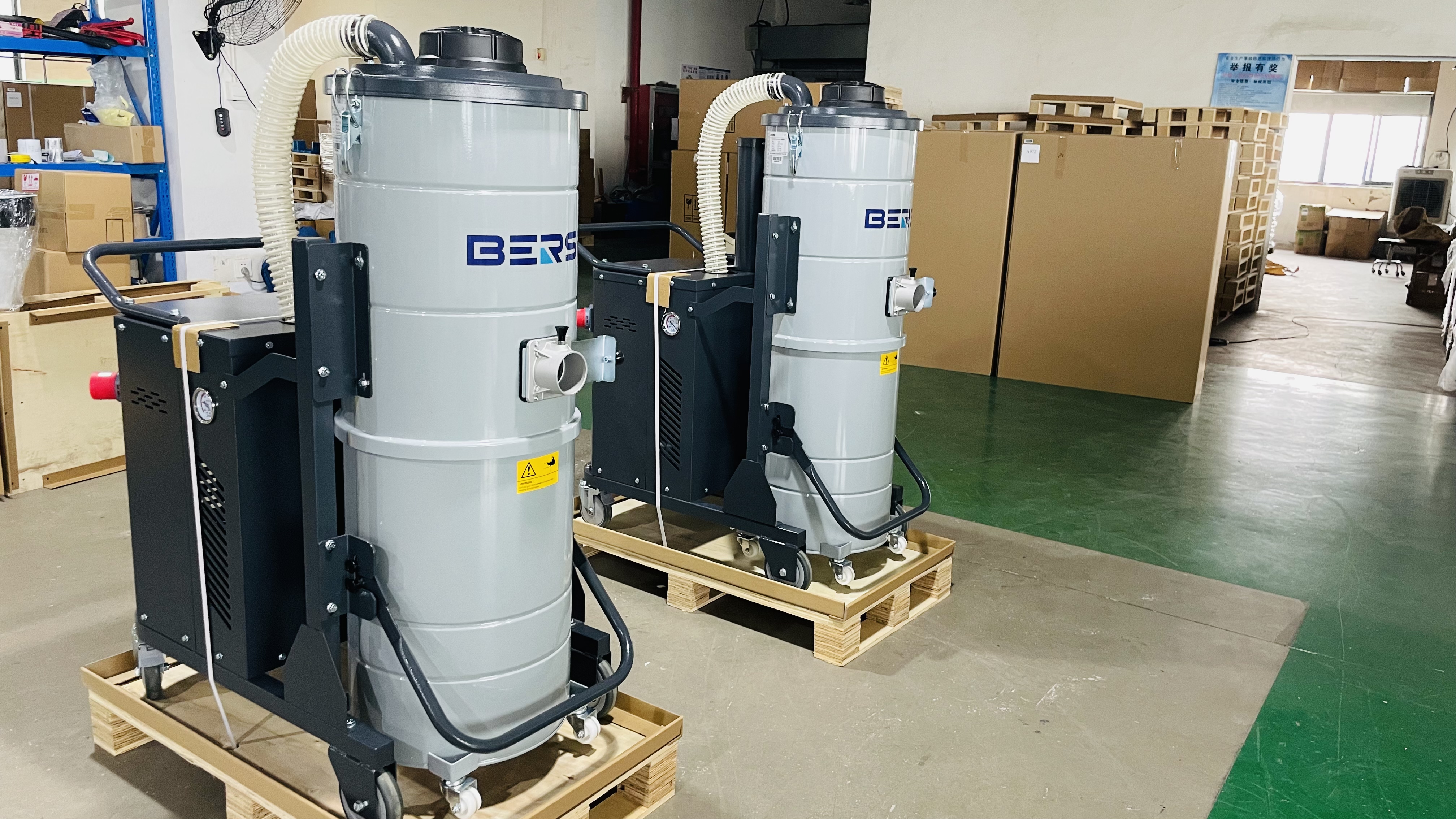Suction power is one of the most critical performance indicators when selecting an industrial vacuum cleaner.Strong suction ensures efficient removal of dust, debris, and contaminants in industrial settings like construction sites, factories, and warehouses. But what exactly determines a vacuum cleaner's suction power? In this article, we’ll explore the core factors affecting suction performance and why they matter for your business.
The primary driver of suction in any vacuum cleaner is its motor power. Measured in watts (W), the motor converts electrical energy into mechanical force, creating the negative pressure that generates suction. High-wattage motors deliver stronger suction, enabling the vacuum to tackle tougher cleaning tasks. The power of the smallest industrial vacuum from Bersi is 1200 watts, which enables it to generate a relatively strong suction. And the most powerful one can reach up to 7500 watts. In contrast, common household vacuum cleaners usually have a power range of 500 - 1000 watts.
Different motor types have distinct performance characteristics. Brushless motors, compared to brushed motors, offer higher efficiency and better control. At the same rate of power, a brushless motor can provide more powerful suction, with more stable operation, lower noise, and a longer lifespan. However, the cost of brushless motors is relatively higher.
A reasonable air duct structure can reduce air resistance and make the air flow more smoothly, thereby enhancing the suction power. For example, the degree of bending, length, and diameter of the air duct all affect the suction. A well - designed air duct will minimize bends and keep the cross - sectional area of the duct uniform to minimize the energy loss of the air during flow.The size and shape of the air outlet also have an impact on the suction. If the air outlet is designed too small, it will cause poor air exhaust and affect the suction. Generally, appropriately increasing the area of the air outlet under the premise of ensuring the filtering effect can improve the suction of the vacuum cleaner.
An overlooked aspect of suction performance is the filter system. While filters are necessary to trap dust and fine particles, they can restrict airflow if not properly maintained or if the filter design is suboptimal. Clogged or blocked filters reduce suction power over time, so industrial vacuums with automatic filter cleaning systems, like the BERSI auto-clean system, ensure consistent airflow and sustained suction performance.
The design of the hose and nozzle also plays a crucial role in determining suction power. Longer or narrower hoses can create more resistance, reducing suction strength at the point of use. Industrial vacuums designed with short, wide hoses or optimized nozzle designs maintain better suction, ensuring efficient debris collection.
Even with a powerful motor, poor sealing can lead to suction loss. Leaks in the vacuum's housing, hose, or connections allow air to escape, reducing the overall suction power. Industrial vacuums with robust sealing mechanisms and high-quality components ensure that suction is concentrated where it’s needed most.
When shopping for an industrial vacuum cleaner, it's essential to look beyond basic specifications. Factors like motor power, Air Duct Design, filter system, and the overall build quality all contribute to the machine’s suction power and cleaning efficiency. By understanding these elements, you can make informed decisions and choose a vacuum that meets your business’s specific needs.
For top-tier industrial vacuums with optimized suction performance, explore our range of products that deliver strong suction, durability, and low maintenance solutions tailored to your industrial requirements.

Post time: Sep-10-2024
